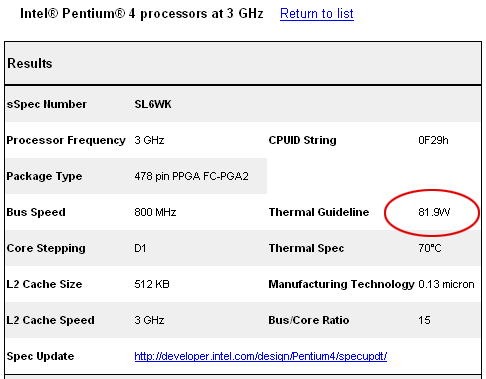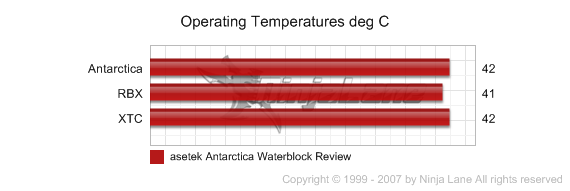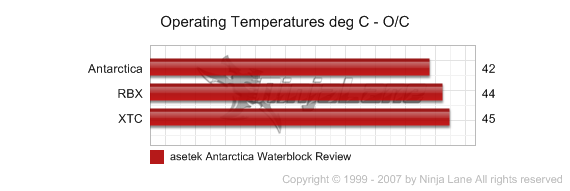After careful consideration I have decided to transfer all hardware review activities to a new domain. I purchased Hardwareasylum.com in 2012 and have been working hard to build a new and improved Ninjalane on that domain. If you are reading this you have reached one of the archived articles, news, projects and/or reviews that were left behind during the site migration.
Please update your bookmarks and be sure to visit the new and improved Ninjalane at Hardwareasylum.com
asetek Antarctica Waterblock Review
Author: Dennis Garcia
Published: Wednesday, April 14, 2004
Benchmarks
The asetek Antarctica is installable on AthlonXP, Athlon64, and Pentium 4 processors running at any speed with performance and overclocking in mind. Here is an overview of the system and testing methodology.
The system as it was tested
Soltek SL-865-GR
Intel Pentium 4 3.0C 800Mhz FSB (SL6WK)
asetek Antarctica
Danger Den RBX
Demonic Water Cooling XTC
The watercooling system consisted of a Hydor L30 pump, Black Ice Extreme radiator, Sunon 120mm fan (running 7v), and a small reservoir for water storage and air collection. 3/8" I.D. hose was used throughout with minimum hose lengths whenever possible.
Motherboard Monitor was used to obtain and record system temperature information and a game of Unreal Tournament 2004 Demo provided the processor usage.
Intel Pentium 4 3.0C 800Mhz FSB (SL6WK)
asetek Antarctica
Danger Den RBX
Demonic Water Cooling XTC
The watercooling system consisted of a Hydor L30 pump, Black Ice Extreme radiator, Sunon 120mm fan (running 7v), and a small reservoir for water storage and air collection. 3/8" I.D. hose was used throughout with minimum hose lengths whenever possible.
Motherboard Monitor was used to obtain and record system temperature information and a game of Unreal Tournament 2004 Demo provided the processor usage.
Editors note: Keep in mind that under normal gaming conditions it is unlikely that we would ever attain a 100% of the rated heat output, as documented by Intel (see below),
when using Unreal Tournament 2004 Demo as a basis for heat production. Knowing this the game was played until the maximum temperature was attainted and stabilized, or when no less than 2 rounds were completed.
Other things to consider when judging software induced heat output.
a) Clock throttling by the processor at high temperatures.
b) Normal software isn't designed to produce maximum heat output.
c) Variances of cooling temperature.
d) Variances in CPU load.
e) Inaccuracies in thermal diode readouts.
Of course the list goes on..
My testing methodology is aimed to provide a real world look into this waterblock given the test system provided.
a) Clock throttling by the processor at high temperatures.
b) Normal software isn't designed to produce maximum heat output.
c) Variances of cooling temperature.
d) Variances in CPU load.
e) Inaccuracies in thermal diode readouts.
Of course the list goes on..
My testing methodology is aimed to provide a real world look into this waterblock given the test system provided.

Default Processor Speed and Vo

As we can see all of the blocks perform great under the default processor conditions. It would be possible to see a minor sway in the recorded temperatures by using larger diameter tubing a faster fan speed but for the purposes of this test these results will work fine.
Overclocked Processor Speed an
For the next benchmark the FSB and processor voltage were increased to 235Mhz FSB @ 1.60v Vcore with a resulting speed of 3.5Ghz. At this speed the processor can potentially produce 108w under full load.

Benchmark Conclusion
I think the numbers speak for themselves. Some may wonder why there wasn't a bigger temperature gap when running at the default speed. Well in this case it comes down to how the processor heat was produced. For this review the new Unreal Tournament 2004 Demo was used and as it would turn out the game is less demanding of CPU resources. With the less CPU usage comes reduced processor wattage and lower overall temperatures. At best I estimate that only 60% of the theoretical wattage max was attained and the 42C shown was the sweet spot given the cooling system configuration.

